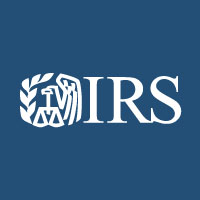IR-2020-08, January 14, 2020
WASHINGTON — Filing taxes for the first time or working part-time? IRS Free File may be the perfect match for people looking to save money on federal tax preparation.
Most Free File users are under the age of 30 with modest incomes. The Free File adjusted gross income limit for 2020 is $69,000. For those who want to do their own taxes, Free File means free tax preparation, free electronic filing and free direct deposit, which is the fastest way to get a refund.
“Doing your taxes may seem a bit overwhelming, but it’s not. Free File does the hard work for you. The software finds the right forms, finds any tax benefits and does all the math,” said Ken Corbin, commissioner of the IRS’ Wage and Investment division. “Here’s a key tip: have all your income records like your Form W-2 ready before you start.”
Another plus: Free File is mobile enabled. Taxpayers can use their smart phones or tablets to do their taxes.
Free File features 10 brand-name tax software providers who are in a partnership with the IRS to offer their online products for free. Each provider sets additional eligibility requirements, generally based on age, state residency and income.
Here’s how Free File works:
- Go to IRS.gov/freefile to see all Free File options.
- Browse each of the 10 offers or use a “look up” tool to help you find the right product. Each Free File partner sets its own eligibility standards generally based on income, age and state residency. But if your adjusted gross income was $69,000 or less, you will find at least one free product to use. Two products are in Spanish.
- Select a provider and follow the links to their webpage to begin your tax return.
- Complete and e-file your tax return only if you have all the income and deduction records you need. The fastest way to get a refund is by filing electronically and selecting direct deposit. If you owe, use direct pay or electronic options.
If this is the first time that you’ve filed a federal tax return and you are single, here’s what you need before you start:
- Social Security number.
- Wage and income information i.e. Form W-2 or Form 1099. Remember: parts of college scholarships or grants may be taxable income.
- Check with your parents to make sure they are not claiming you as a dependent. You may still file a separate tax return but if you are being claimed as a dependent by others, you cannot claim yourself as a dependent.
- Documentation for all tax credits and deductions. Remember: the standard deduction has been greatly increased so that itemizing your deductions may not be necessary.
- For all electronic tax returns, you must use your prior-year adjusted gross income as part of your electronic signature. If you are a first-time filer over the age of 16, simply enter 0 (zero) as your prior-year income for signature purposes. If you filed before, your prior-year tax return will show your adjusted gross income.
- Bank account and routing number. If you are receiving a refund, and most people do, the fastest way to get a refund is through direct deposit to a financial account.
Free File is available now through October to accommodate extension filers.

